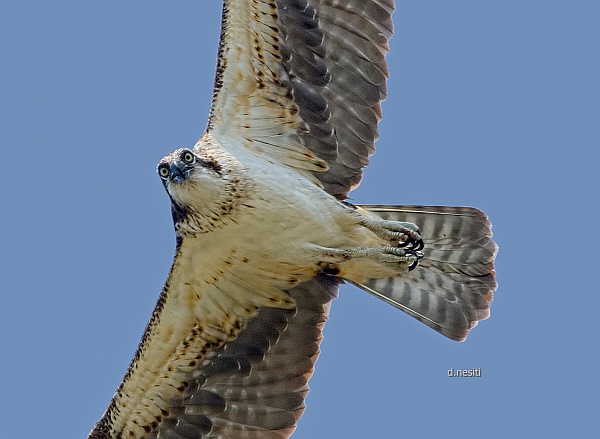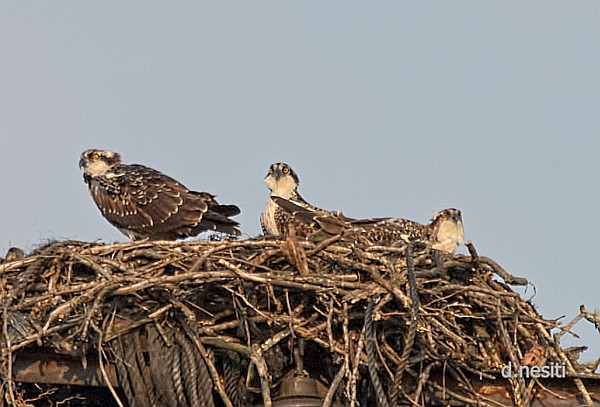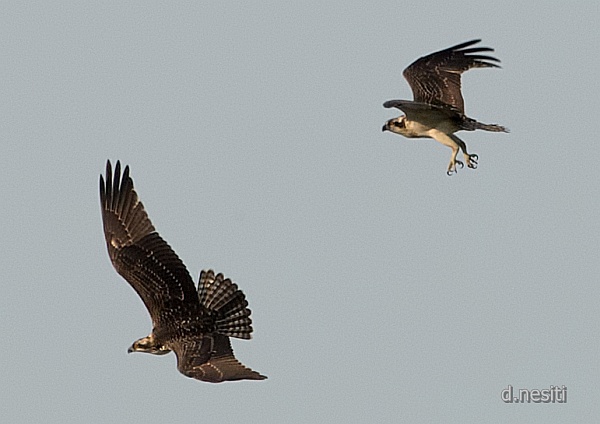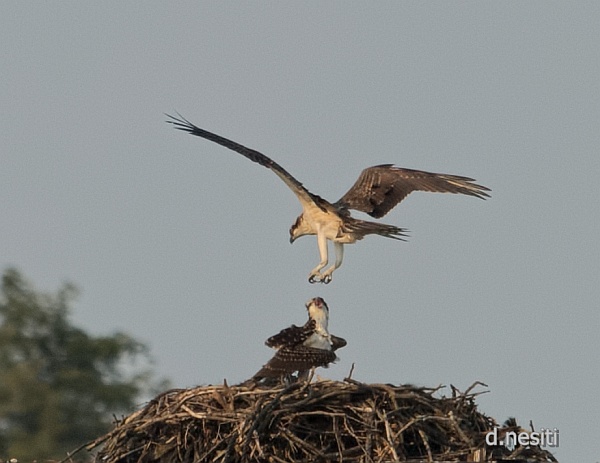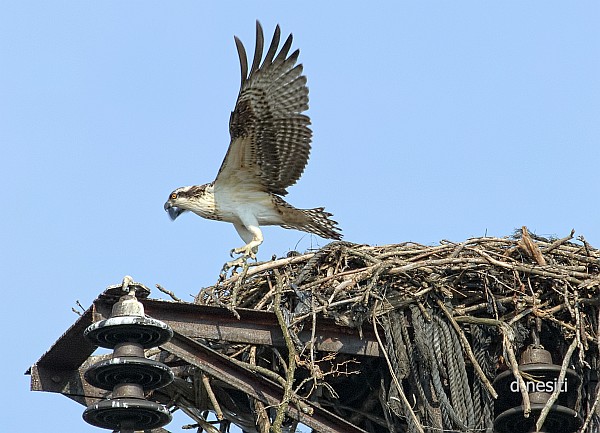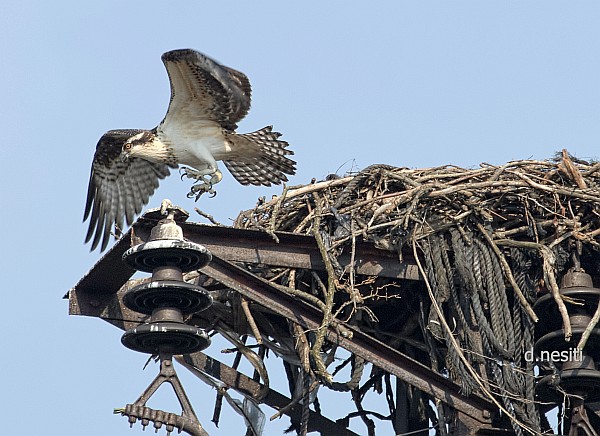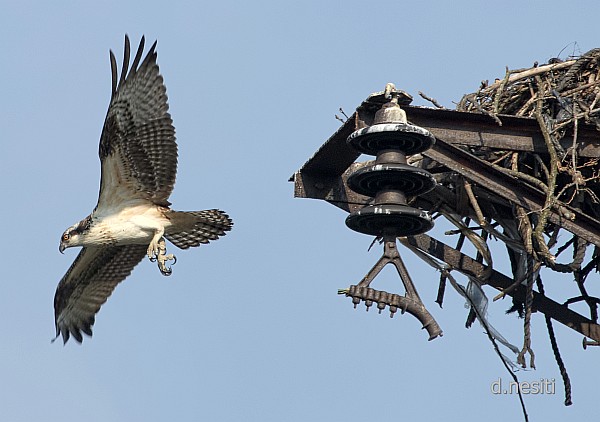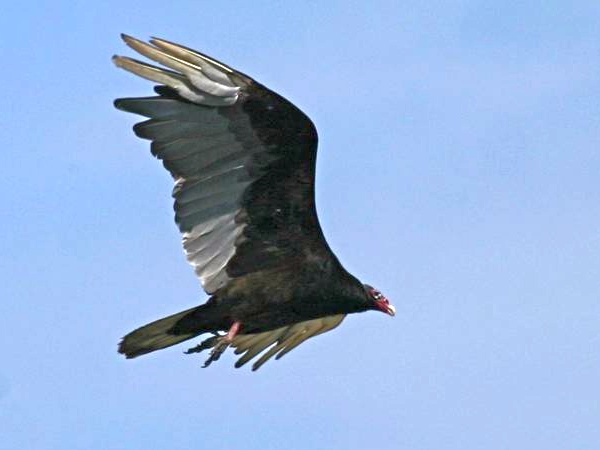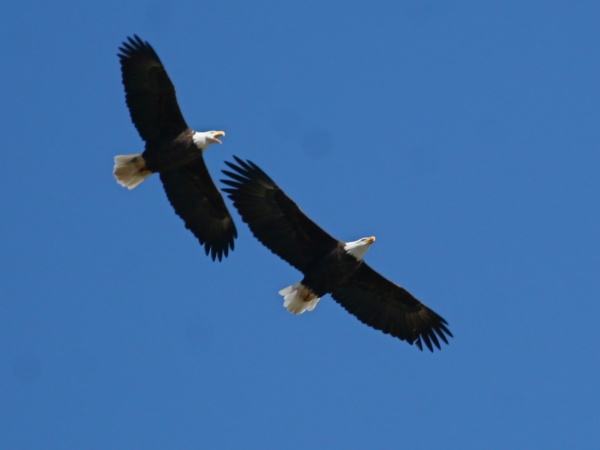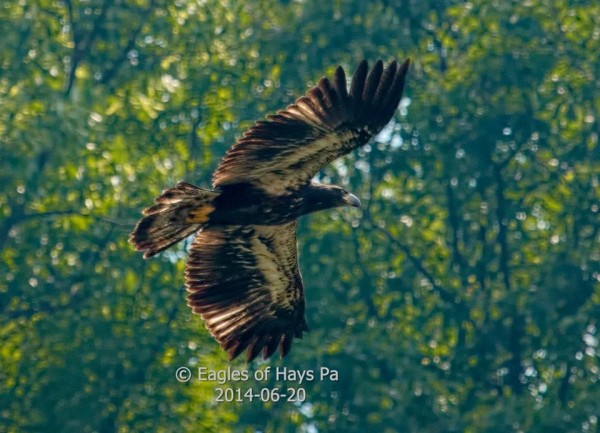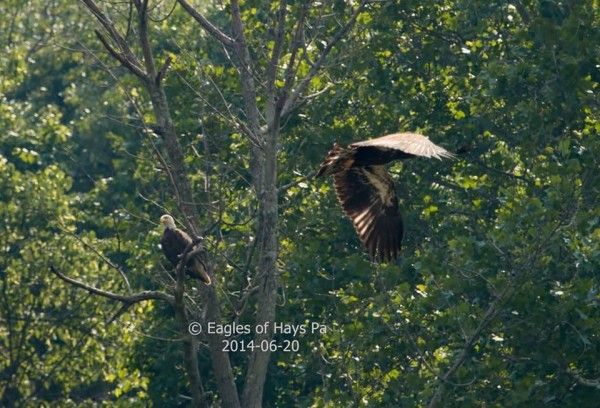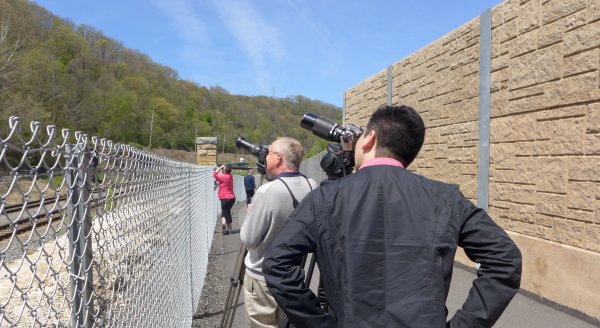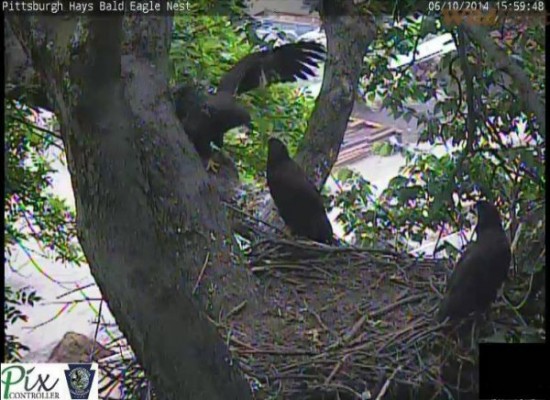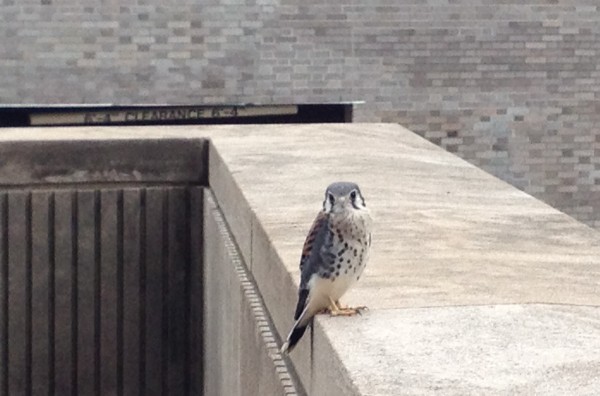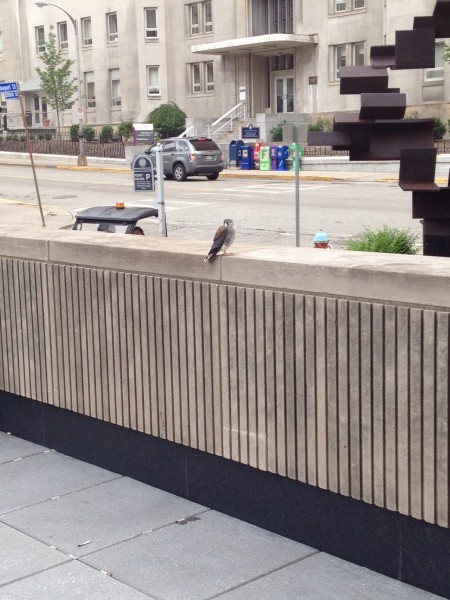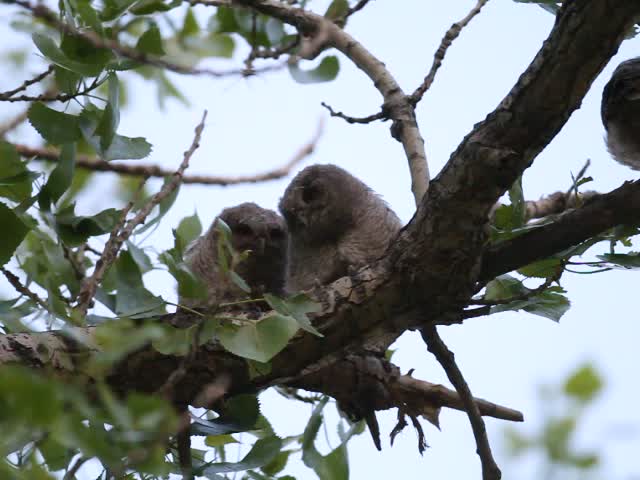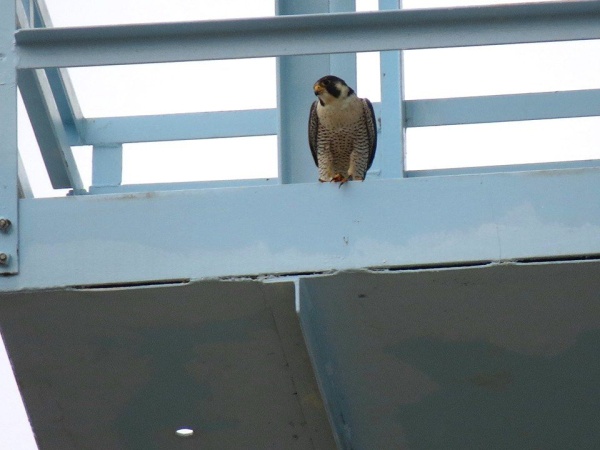
Here’s the latest news of Pittsburgh’s peregrines and bald eagles plus information on two events: Westinghouse Bridge Fledge Watch, July 18-20, and the Eagle Lovers Outing on August 2.
Peregrine News
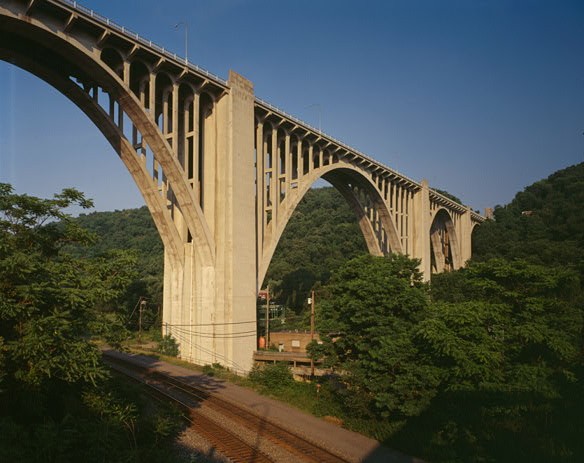
Westinghouse Bridge
Peregrine season isn’t over! Two nestlings at the Westinghouse Bridge will fledge next weekend. John English has organized a Peregrine Fledge Watch for Friday July 18, 6-8pm, Saturday July 19, 2-4pm and Sunday July 20, 2-4pm. Please contact John at Pittsburgh Falconuts Facebook page or leave a comment on this blog if you plan to attend. I’ll be there on Saturday. C’mon down!
Green Tree Water Tower
Green Tree wins the prize for strangest peregrine behavior. After a long absence during the heart of the breeding season, a pair of peregrines is again at the Green Tree water tower. What happened between April 1 (the date of Leslie Ferree’s photo above) and now? Did the old pair leave and a new pair show up? Stop by the Green Tree water tower and tell us what you see. Peregrines always surprise us.
UPDATE, 16 July: Tim and Karena Johnson visited the water tower recently and saw a pair of red-tailed hawks perched on the railings. Since we know that peregrines drive out red-tails — and all other hawks — within their territory it’s probable that the peregrines are not at the water tower at all.
UPDATE, 17 July: Mary Jo Peden, one of the long-time Green Tree monitors, saw a peregrine at the water tower today. It had been exactly two months since she last saw one there. So, yes, they are there but not often.
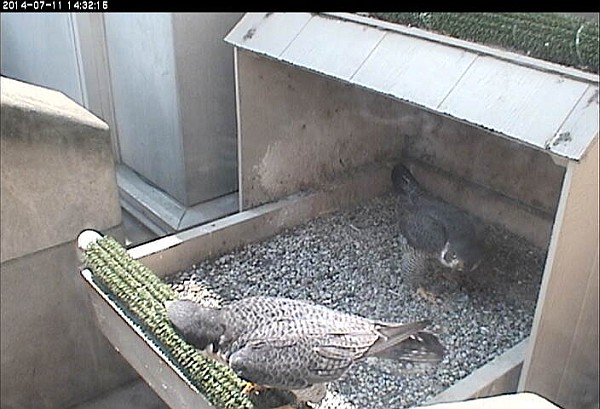
University of Pittsburgh, Cathedral of Learning
Dorothy and E2 are present every day but not often seen because they’ve found new hiding places in which to molt. The snapshot camera shows they still visit the nestbox for brief bowing sessions (last Friday, above). Meanwhile the streaming falconcam and infrared array have both shut down and need an on-site visit from a skilled technician with access to the ledge. This maintenance will be scheduled in the fall.
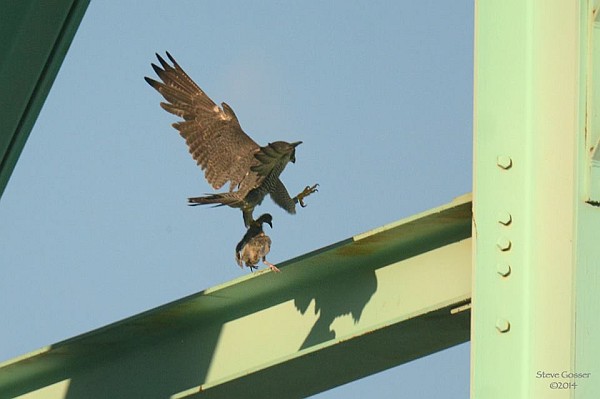
Tarentum
Rob Protz reports that “mom” peregrine (nicknamed Hope) was at the Tarentum Bridge with her remaining juvenile for several hours on July 8. The youngster, whom Rob calls “Screecher,” was begging loudly for food. It sounds like Hope is weaning him from dependence on his parents. Pun intended!
Gulf Tower, Monaca Bridge, Neville I-79 Bridge and McKees Rocks Bridge: No updates from any of these sites but at this time of year that’s good news.
Bald Eagle News
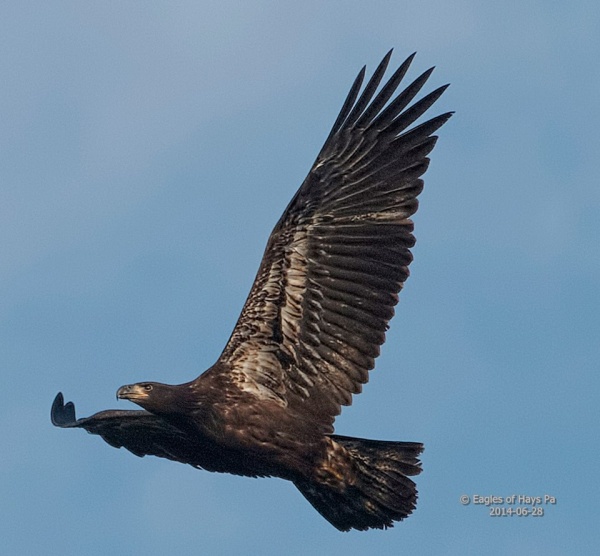
Hays
All three eaglets fledged successfully in late June and are flying so well that they’re hard to find. They are out and about learning the ways of eagles and how to find food. Meanwhile, to wrap up the season, Eagles of Hays PA and Urban Eagles in Pittsburgh are planning an Eagle Lovers Outing and tour on Saturday August 2, starting at 11am at Vallozzi’s Restaurant in Greensburg, PA. Click here for more information.
Harmar and Crescent Township There’s no update from our other eagle sites but, as for peregrines, no news is good news at this time of year.
With no nest activity, the next six months will be very boring for peregrine and bald eagle fans. We’re looking forward to 2015.
(photo credits in order of appearance:
Peregrine at Green Tree water tower, 1 April 2014 (photo by Leslie Ferree)
Westinghouse Bridge (photo by Joseph Elliott, Library of Congress)
Dorothy and E2 at the Cathedral of Learning nestbox (photo from the National Aviary snapshot camera)
Peregrine with pigeon meal, Tarentum Bridge, 3 July 2014 (photo by Steve Gosser)
Juvenile bald eagle from the Hays PA nest (photo by Dana Nesiti)
